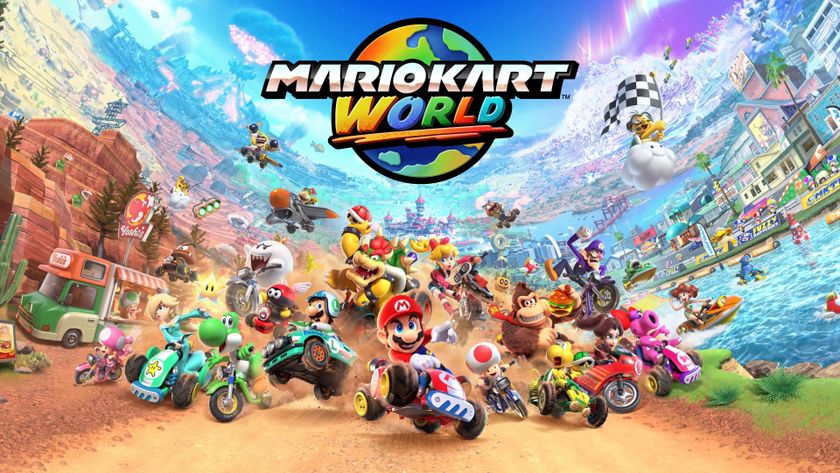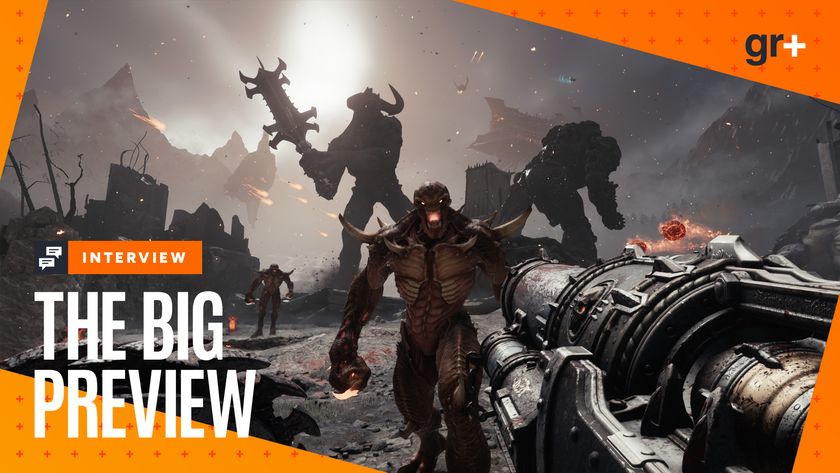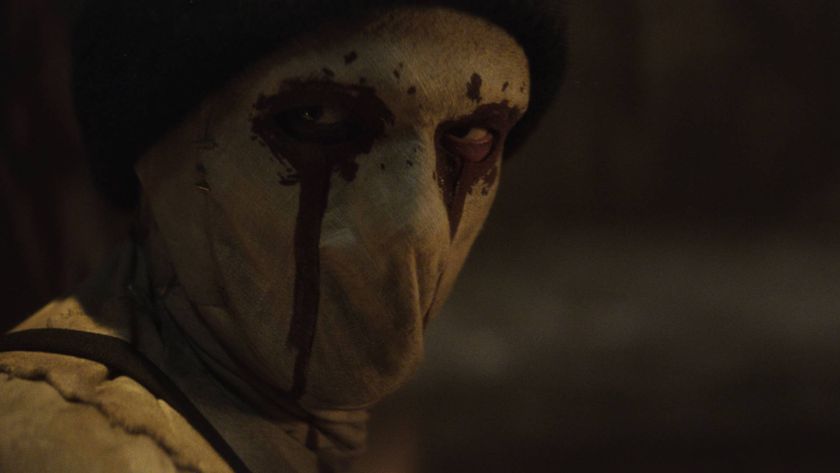The real-life Nuketown: Where Call of Duty got its most iconic map
Black Ops' twisted vision of suburbia is more real than we might like to believe

It’s idyllic, in a way. The ‘50s estate car sitting on the drive. The double garage with an angular, lean-to roof, guiding the eye towards the exposed brickwork of a mid-century home. Through the front door, gleaming kitchen furniture, and figures sat together around the table, arms frozen in animated conversation. The perfect American nuclear family.
Out in the yard, a gardener in a buttoned-up blue dress presiding over rows of poppies, sunflowers and chrysanthemums - vivid colours matched by the butterflies fluttering above. Look higher, however, beyond the picket fencing, and you’ll see acres of desert. The double rainbow on the horizon, eerie and unexplained, like something from Death Stranding.
That’s Nuketown for you: a place of alluring juxtaposition. Where the comforting spurts of the lawn sprinkler predicts machine gun fire, and the TV set shows nothing but static; rendered obsolete by the signal deadzone of the Nevada wasteland.
As a Call of Duty map, it’s become iconic, a cramped and frantic playground where mannequins test your trigger finger, and sightlines are broken by a bright yellow school bus. It’s been reworked and remade for every Black Ops game to date, and will almost certainly show up again this year, in the long-rumoured Call of Duty: Black Ops Cold War.
Stranger than fiction

Nuketown is far from an abstraction, though. Yes, Treyarch may have taken inspiration from Kingdom of the Crystal Skull, the Indiana Jones movie released shortly before Black Ops entered development, in which Indy survives a nuclear test by hiding out in the fridge of a replica suburban home. But Crystal Skull itself drew on the all-too-real ‘doom towns’ of the 1950s: creepily detailed fake settlements the US government built to measure the impact of its nuclear weapons.
The Americans established their Nevada test site just half a decade after the bombings of Hiroshima and Nagasaki. Situated 65 miles northwest of Las Vegas, its mushroom clouds were large enough to be seen from downtown hotels, and became a perverse kind of tourist attraction.
“We used to get up in the morning, drive out to the highway and watch the blast,” local Gail Andress told the Las Vegas Weekly. “There was a regular caravan of cars going out. We’d park on the side of the road, wait until it was all over, go home, have breakfast, get the kids off to school and then go to work. It looked like the sun come up again.”
Sign up to the 12DOVE Newsletter
Weekly digests, tales from the communities you love, and more
Technicians built the doom towns at varying distances from ground zero to see whether they could withstand the blast and heat of the explosions. They recreated grocery stores, gas stations, and dozens of brick and wood homes, kitting them out with packaged foods and industry-donated furniture.
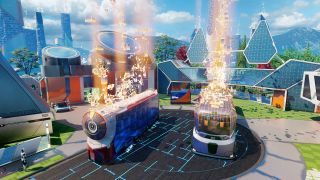

Call of Duty: Warzone's ridiculously OTT in-game lobbies are the best part of its battle royale
Workers posed families of mannequins inside, as if captured during the last moment of normality before annihilation - the very moment so many Americans feared in the early Cold War, after childhood drills taught them to cower under their school desks.
The mannequins' clothes had a practical purpose (officials wanted to observe how materials like wool, cotton and nylon would act under the extreme conditions of a nuclear blast), but they also served to make the scenes more disturbing, and certainly contributed to Nuketown’s uncanny atmosphere. As with so much horror, it makes the familiar unnatural.
Footage captured for a frankly terrifying short film distributed by the US government in 1955 showed the impact of that year’s Apple-2 test on the fake homes. The temperature alone blistered the paint on a house 6,000 feet from ground zero, before the blast ripped the gutters from its roof. Closer buildings were pulled to pieces, heat visibly rolling up their walls before they exploded.
The Atomic Energy Commission detonated over 100 bombs between 1951 and 1962, giving each one a cute name like Badger, Eddie, or Annie. One 32 kiloton nuke was dubbed Harry, but later nicknamed ‘Dirty Harry’ by the press, since miscalculation and wind change produced unusually high amounts of radioactive fallout.
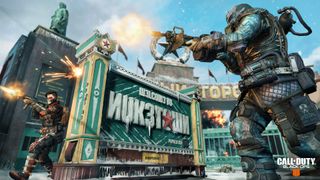
If the idea of above-ground nuclear testing in your national backyard sounds insane to you, then you’re not wrong. The AEC, which picked the Nevada site after the Korean War made South Pacific testing unviable, told locals that their “best action [was] not to be worried about fallout.”
Yet for two and a half decades, fallout was regularly carried west by the wind, where it would pass through St. George in Utah. The city reported increases in a host of different cancers over that period, and in 1990 Congress passed an act to grant compensation for ‘downwinders’. While the US government was building fake communities to test the effects of radiation, its bombs were impacting real ones.
In one bizarre case, a notoriously crummy epic starring John Wayne as Genghis Khan was shot just outside St. George. Officials said the Utah desert was perfectly safe, but in the years that followed, 91 of the 220 cast and crew on The Conqueror developed cancer, Wayne among them. A link was never proven.
Going dark

"The first Nevada doom town in 2010’s Black Ops remains the spookiest and most evocative."
Perhaps that story contributes to the ongoing fascination of Hollywood - and by extension, the Santa Monica-based Treyarch - with doom towns. Radioactive, the new film about the life of nuclear pioneer Marie Curie, features a detour to the Nevada test site, echoing Indiana Jones. Filmmakers keep returning to these twisted movie sets, populated by mannequins, built for some of the most enormous and irresponsible pyrotechnics ever seen.
Iteration has taken Nuketown away from its primary inspiration, displacing the suburbs to suit the setting of each successive Treyarch game. Call of Duty: Black Ops 3 reimagined the map as a sci-fi simulation, and its most recent version was located in a mini-Moscow.
But that first Nevada doom town in 2010’s Black Ops remains the spookiest and most evocative. There, even now, a game of bowls is ongoing. A woman sits on a swing, perfectly still, and a family at a diner-style table tucks into a meal of artificial fruit. Out in the street, a moving truck is loaded with cardboard boxes, though their owners will never move in or move out. And that bright yellow school bus sits perpetually in a cul de sac it can never leave, since there’s nowhere to go; just acres of desert, and impending doom.
For more on 12DOVE, check out the biggest upcoming games of 2020 still on the way, or watch our latest episode of Trending Topics below.
Jeremy is a freelance editor and writer with a decade’s experience across publications like GamesRadar, Rock Paper Shotgun, PC Gamer and Edge. He specialises in features and interviews, and gets a special kick out of meeting the word count exactly. He missed the golden age of magazines, so is making up for lost time while maintaining a healthy modern guilt over the paper waste. Jeremy was once told off by the director of Dishonored 2 for not having played Dishonored 2, an error he has since corrected.




